Urei 1176 Peak Limiter
Message Board - Urei 1176 Peak Limiter
Urei 1176LN User and Service Manual (Serial #7652 and above)
The 1176LN Peak Limiter is a compressor introduced by UREI in 1967. The 1176LN was inducted into the TECnology Hall of Fame in 2008. At the time of its introduction, it was the first true peak limiter with all solid-state circuitry.
Uses
• It used a FET for gain reduction, in a feedback configuration.
• Four different compression ratios were available 4:1, 8:1, 12:1, and, 20:1
• Attack time was adjustable from less than 20 microseconds to 800 microseconds
• Release times were adjustable from 50 ms to 1,100 ms
• Two units could be linked for proper stereo operation (not just dual mono)
Revisions
The 1176 underwent a number of revisions including the addition of Brad Plunkett's low-noise (LN) circuitry to produce the 1176LN. This reduced the noise by 6 dB and redistributed the noise spectrum, producing even more noise reduction in the sensitive mid-range. Revisions D and E are reputed to sound the best.
• Revision A was the original (1967/6/20) design by Bill Putnam, it had a brushed aluminium face, blue paint and red power light. Serial numbers 011-125
• Revision AB improved stability and noise. (1967/11/20) Serial numbers 126-216
• Revision B incorporated changes to transistors. Serial numbers 217-1078
• Revision C, the 1176 LN, added low-noise circuits on additional circuit boards and reduced distortion and changed the faceplate to black. (1970/1/9) Serial numbers 1079-1238
• Revision D has no circuit changes, but the additional low-noise circuitry was incorporated into a new main circuit board. Serial numbers 1239-2331
• Revision E has a new power transformer that is now switchable between 110 V and 220 V. Serial numbers 2332-2611
• Revision F changed the output amplifier from a class A to a push-pull design. Metering circuit now uses and op-amp (1973/3/15) Serial numbers 2612-7052
• Revision G replaced the input transformer with a differential amplifier. Serial numbers 7053-7651
• Revision H changed the faceplate to silver and includes a red “Off’ button. This version is branded with blue UREI logo. Serial numbers 7652-
• Universal Audio Re-Issue (2000/4/1) is based on “D” and “E” models.
All Button Mode
It was common to use the 1176 in 'all-button mode' or 'British mode'. This was when all four of the ratio buttons are pressed simultaneously.
"The way the 1176 sounds, and specifically, the way All-Button mode sounds, is partially due to it’s being a program dependent compressor. The attack and release are program dependent, as is the ratio. The 1176 will faithfully compress or limit at the selected ratio for transients, but the ratio will always increase a bit after the transient. To what degree is once again material dependent. This is true for any of the 1176’s ratio settings, and is part of the 1176’s sound. But in All-Button Mode, a few more things are happening; the ratio goes to somewhere between 12:1 and 20:1, and the bias points change all over the circuit. As a result, the attack and release times change. This change in attack and release times and the compression curve that results is the main contributor to the All-Button sound. This is what gives way to the trademark overdriven tone. The shape of the compression curve changes dramatically in All-Button. Where 4:1 is a gentle slope, All-Button is more like severe plateau! Furthermore, in All-Button mode there is a lag time on the attack of initial transients. This strange phenomenon might be described as a "reverse look-ahead". -Will Shanks
Foundational text courtesy of Wikipedia.
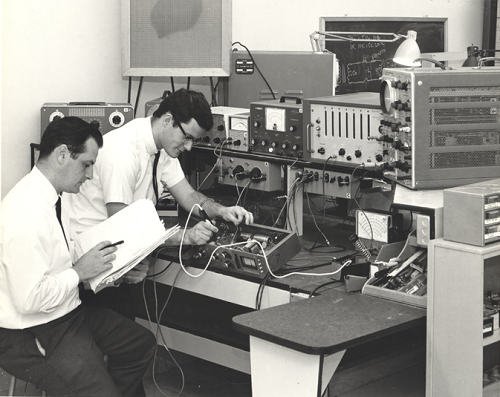
Universal Audio engineers bench testing the original 1176 Limiting Amplifier, circa 1967.
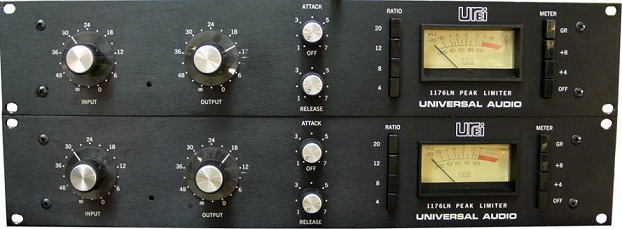
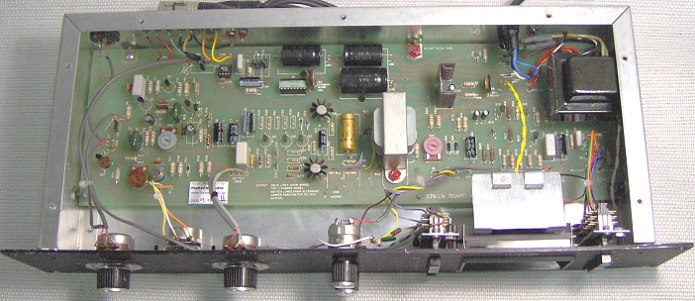
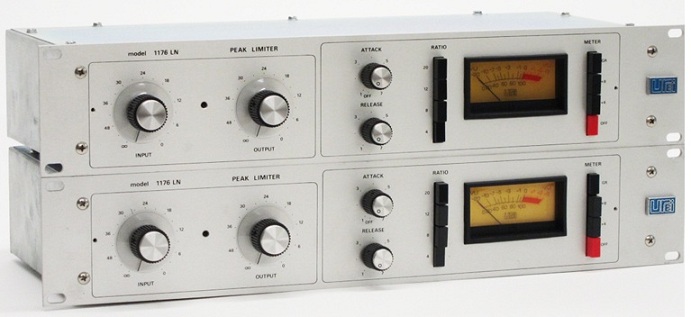
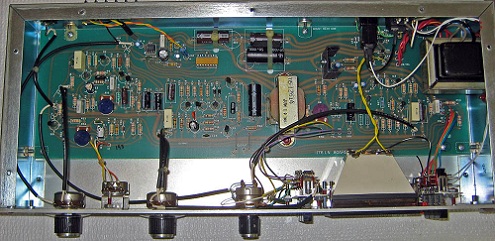
Urei 1176 Peak Limiter
Do you have content, to add, about the Urei 1176 Peak Limiter or associated topics? Please feel free to Share it, here!
Return from Urei 1176 to Outboard Recording Equipment
|


